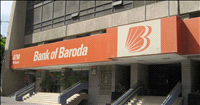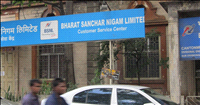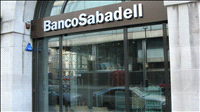Finance ministry wants reserve prices doubled for 3G, wireles broadband
02 Jan 2009
In a note to telecom secretary Siddartha Behura, the finance ministry said, "The reserve price may be increased from Rs2,020 crore to Rs4,040 crore for a pan-India allocation of two blocks of five MHz of 3G spectrum."
 The finance ministry has also asked for a doubling of the reserve price for wireless broadband services to Rs2,000 crore for pan-India allocation. DoT had recommended Rs1,000 crore for it.
The finance ministry has also asked for a doubling of the reserve price for wireless broadband services to Rs2,000 crore for pan-India allocation. DoT had recommended Rs1,000 crore for it.
With the revised reserve price, the government may collect up to Rs60,000 crore from 3G radio spectrum auction. Minister of state for communications Jyotiraditya Scindia had said a few months ago that he expects the 3G bids to gross Rs30,000-Rs40,000 crore. The actual collections will depend on the number of bidders and the actual bid amounts.
Other than the reserve price, the finance ministry has kept the rest of the eligibility parameters unchanged. The minimum net worth of companies required for bidding for all-India 3G licence will remain Rs1,380 crore.
Analysts feel that the finance ministry move could be prompted by the lack of response by forign service provders in the recently held pre-bid conference. By increasing the reserve price, the government may want to ensure that the auctioning results in healthy revenue generation after the blame game that resulted from the low-yielding 2G auctions could be avoided.
A 3G mobile phone service supports high-speed data transfer, allowing users to surf the internet and download video content at speeds faster than current technologies deployed on Indian cellular networks. The industry has been eagerly awaiting the launch of these services.
The auction of the 3G spectrum has been delayed to end January and the dictat by the finance minister may cause delays further as the bidders may ask for more time to review the situation and raise additional funds.
The spectrum would be auctioned in blocks of 2x5 MHz in 2.1 GHz band and the number of blocks to be auctioned would vary subject to availability in different telecom service areas. The spectrum according to the minister would be granted through a controlled simultaneous ascending e-auction to the successful bidder.
One block of 2x5 MHz in 2.1 GHz band has already been allocated to Mahanagar Telephone Nigam (MTNL) in metro service areas of Delhi while other is provided to BSNL in other service areas at a price equal to the highest bid price determined through e-auction in the respective service area.
Key issues
The increase in the reserve price has come as an unexpeted surprise to the industry. The response to the auctions is already poor due to the high prices and restrictions placed on foreign bidders.
With the current financial crisis having resulted in a liquidity crunch, potential bidders may either opt out of the auctions altogether or want the government toconcede to some stipulations.
Another area of concern is the delay this move will cause. Once the telecom ministry accepts the recommendation by the finance ministry, the matter will then go to TRAI for review, which could tke upto 15 days. With elections around the corner, the model election code would take effect by March 2009 and the auctions may not be completed under the government.












.jpg)
















